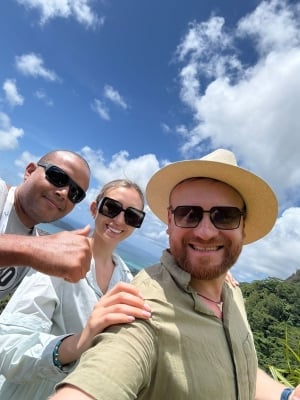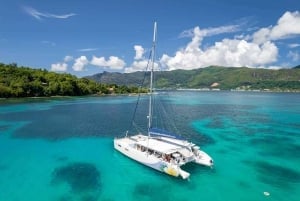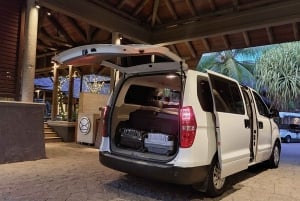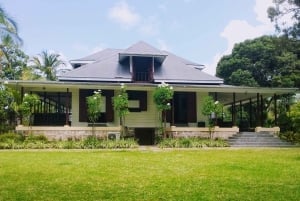Vallée de Mai

The Vallée de Mai found in the heart of Praslin
The Vallée de Mai is open daily from 08h00 to 17h30 and situated in the middle of Praslin, only a fifteen minute drive from the airport and on the way to the east coast and the Baie Sainte Anne. You can drive directly to the entrance and (if you're coming from the airport) park on the right-hand side in a car park that is designed for visitors.
The Vallée de Mai is one of the world's smallest UNESCO World Heritage Sites and is situated in the heart of Praslin's National Park. It was officially declared a nature reserve on the 18th April 1966 and is one of the few remnants of prehistoric forests that are left from the time when Seychelles was still a part of the Gondwanaland (the large land mass that has today become Africa, India and Madagascar).

The Vallée de Mai is today a nature reserve and a UNESCO World Heritage Site
The Vallée de Mai is famous for growing the 'coco de mer' (roughly translated as coconut from the sea as they were first discovered as they washed up to the shores of the neighbouring islands), which have the largest seeds of any plants in the world (the seeds can weigh more than 20 kg) and leaves that can grown up to 14m long and 6m wide, but is also home to many types of trees and interesing species of plants and animals.
Up until around the 1930's the Vallée de Mai was left untouched and it was only when a new landowner decided to change and update the landscape to a more tempered environment that new trees (ornamental and fruit) were introduced. The government bought the Vallée de Mai in 1948 and it became a Nature Reserve in 1966. The main priority was rehabilitation to restore the area to its original and natural heritage and many of the invasive and foreign species were elminated. Today the forest is almost 100% back to its roots and is a wonderful place to visit to feel the spirit of the land as it should be.
There are male and female coco de mer palms which both produce a fruit with an incredible likeness to parts of the respective male and female human body, for which they are famous. The male palms can grow up to 30 metres high and the female up to 24 metres. The seed is contained within a husk and takes anywhere between 6 and 7 years to fully ripen. The coco de mer palm trees reach maturity between 20 and 40 years and can live from anywhere between 200 and 400 years.


There are five main routes through the Vallée de Mai - all of them circular which will bring you back to the entrance. Which one you take depends on you and the time you have to savour the experience. At the entrance of the Vallée de Mai you will pay a visitors fee which contributes to the research, conservation and maintenance costs of the Vallée de Mai and the other second World Heritage Site in Seychelles; Aldabra (a large atoll situated over 1100 kms away from the granitic islands).
From here you will be given a little guide book which provides you with background information on the Vallée de Mai and the routes you can take, along with a brief description of the different plants and species to look out for. The shortest route will take you around an hour (shorter if you don't linger at the sights) and is 1.0 km whereas the longest is between 2 and a half and 3 hours (depending on your speed) and 2.0 km long.











